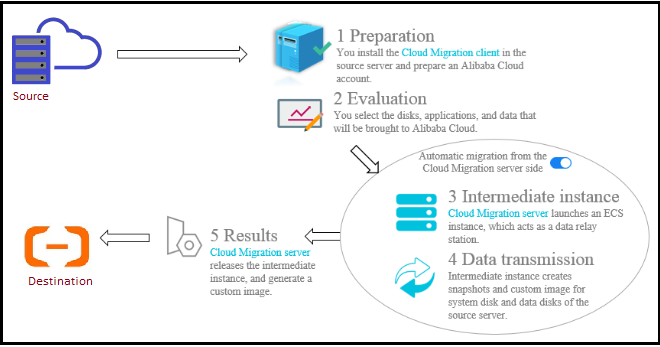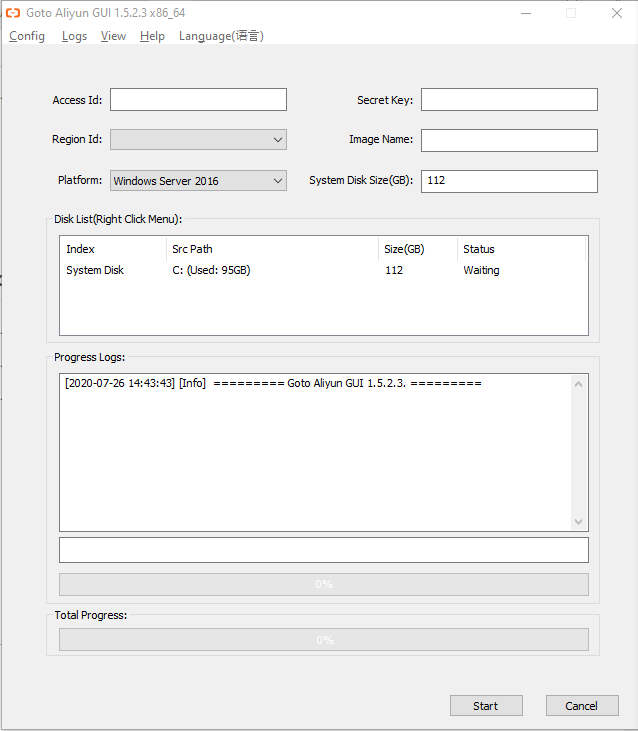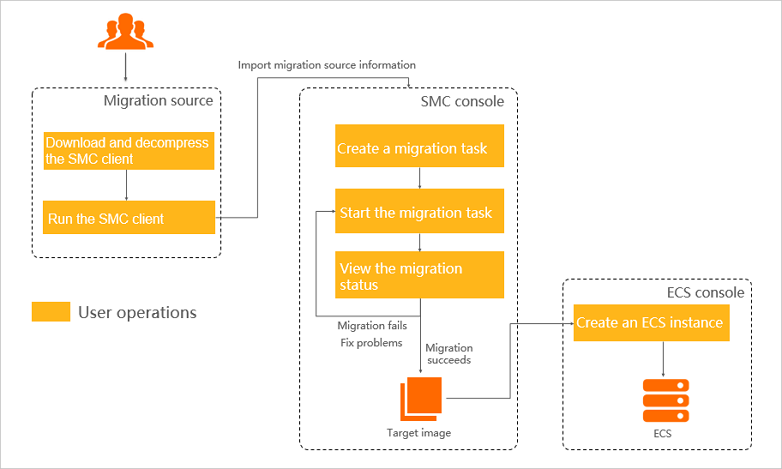By Shantanu Kaushik
Cloud computing has been the center of any organizations operations and has opened cheaper, reliable and more progressive ways to get the job done. In this era of advanced and high-end computing needs, centralized resource computing once was the flagbearer of computing needs. However, since the time cloud computing came along, the distributed computing cycle has made operations and implementation a much less tedious task.
Alibaba Cloud has held a position of a prime mover in the field of distributed computing needs. It offers solutions that are tailored fit for most industry practices and trends. Alibaba Simple Application Server is one of such solutions that enable the users to host their applications with one touch deployment scenarios.
Talking about trends, one such trend is migration to cloud. Cloud migration is simply a process of moving digital business to cloud. Migration could be from on-premises, from legacy infrastructure to the cloud or in cases of organizations already on other cloud platforms, it is a move to Alibaba cloud as their primary cloud provider.
Alibaba cloud offers the Cloud Migration tool that used to cater to most migration centric needs. One can use the cloud migration tool to migrate from physical to virtual or virtual to virtual. This cloud migration tool is primarily used to migrate a server to an ECS instance in Alibaba Cloud service. Alibaba cloud migration tool supports migration from most type of servers including IDC servers, Virtual machines, other cloud platforms and hosts.
The Alibaba cloud migration tool records all the necessary data after it is deployed on the source server. After you prepare an Alibaba account, the evaluation process starts. This lets you select what you wish to migrate. The next step is to setup a data relay station that is an ECS instance started by the migration tool. The migration tool then generates a custom image, based on the recorded snapshot that includes your operating system data, the applications and data stored on your source server.

Illustration of the Migration process using Alibaba Cloud Migration Tool Img. 0.1
Your source server must be configured to access the following:
The Alibaba Cloud Migration tool is available for Windows and Linux. You can go ahead and download it from this file
After you download the .zip file, extract it. You will see something like this:

Further extract the files based on which operating system you are using.
Locate and open the user_config.json file and fill in the parameters based on where and what you are migrating. Follow the steps these links to edit the server parameters and Data disk parameters.
While using Windows server, run either go2aliyun_client or go2aliyun_gui. Here we are going to showcase the GUI version.
Make sure you run this program as administrator. Fill in the parameters and click on start.
The GUI on Windows server will look like this:

For more information please visit the elaborate help on the official product documentation
After the migration is complete, you can see the result in the ECS console, task progress and logs.
[2020-07-25 13:04:21] [Info] =======Goto Aliyun Client 1.5.2.3. =======
[2020-07-25 13:04:21] [Info] Goto Aliyum Begin...
[2020-07-25 13:04:21] [Info] Check User Config...
[2020-07-25 13:04:21] [Info] Load Client Config...
[2020-07-25 13:04:21] [Info] Get OS Info...
[2020-07-25 13:04:22] [Info] Client Check ...
[2020-07-25 13:04:24] [Info] Gen SSH Key...
[2020-07-25 13:04:25] [Info] Prepare ECS...
[2020-07-25 13:04:26] [Info] Check Resource [cn-hangzhou]...
[2020-07-25 13:04:26] [Info] Create Server Instance [ecs.n1.small]...
[2020-07-25 13:04:30] [Info] Wait For Server ECS...
Stage (0/3) ECS Status: Stopped, time 5s
[2020-07-25 13:04:35] [Info] Server ECS Is Created!
[2020-07-25 13:04:35] [Info] Allocate Public Ip Address...
[2020-07-25 13:04:35] [Info] Start Server Instance...
Stage (0/3) ECS Status: Running, time: 23s
[2020-07-25 13:04:58] [Info] Server ECS Is Running!
[2020-07-25 13:04:58] [Info] Connect to Server Testing, Please wait (600s max)…
Stage (0/3 Connect Test Count : 3, time: 24s
[2020-07-25 13:05:22] [Info] Connect to Server Successfully!
[2020-07-25 13:05:29] [Info] Init Disk 0…
[2020-07-25 13:05:32] [Info] Do Rsync Disk 0…
[2020-07-25 13:05:32] [Info] Rsync Testing, Please wait (600s max)…
Stage (1/3 Rsync Test Count : 1, time: 1s
[2020-07-25 13:05:33] [Info] Rsync Test Successfully!
Stage (1/3 Rsync Size : 1.2GB, progress : 100.11%, time: 2m20s
[2020-07-25 13:07:53] [Info] Do Rsync Disk 0 Successfully!
[2020-07-25 13:07:53] [Info] Do Grub…
[2020-07-25 13:08:08] [Info] Stop Server Instance…
[2020-07-25 13:08:08] [Info] Query Server ECS Status…
Stage (2/3) ECS Status : Stopped, time 23s
[2020-07-25 13:08:31] [Info] Server ECS Is Ready to Create Image!
[2020-07-25 13:08:53] [Info] Prepare To Create Image…
[2020-07-25 13:08:53] [Info] Query Disk 0…
[2020-07-25 13:08:53] [Info] Create Snapshot 0…
[2020-07-25 13:08:54] [Info] Create Snapshot 0 Successfully!
[2020-07-25 13:08:56] [Info] Query Snapshots Progress…
Stage (3/3) Snapshots accomplished, total: 100%, time 2m25s
[2020-07-25 13:11:18] [Info] Create Image…
[2020-07-25 13:11:19] [Done] Create Image Successfully!
[2020-07-25 13:11:20] [Info] Server ECS Is Released!
[2020-07-25 13:11:20] [Done] Goto Aliyun Finished! 7m10s
Enter any key to Exit… After migration is complete and the image is created:
The Alibaba cloud migration tool is still operational and proves to be an excellent tool for migrating to Alibaba cloud. Alternatively, Alibaba cloud has come up with an advanced tool to migrate all your server instances to Alibaba. This tool is called SMC Server Migration Center.
Alibaba Cloud has always been a flagbearer of technological advancement. Alibaba cloud platform has supported migration across platforms and has offered its tool for an automated experience for the user.
Alongside that the Elastic Compute service offered by Alibaba Cloud offers SSD storage on their cloud servers. So, after migration, there is a considerable increase in performance.
Taking it one step forward, Alibaba is now offering SMC along with the previously used Cloud Migration Tool. While supporting everything that the Cloud migration tool supported, The Server Migration Center (SMC) by Alibaba Cloud supports Automatic data migration from any source server.
SMC supports incremental migration, though which one can synchronize incremental data from the source server to Alibaba Cloud. This process doesn't hinder the already running services and provides a much smoother migration process.
Server Migration center also support migration of multiple servers at once. You can use the center console to start multiple migration processes at the same time or call an API to automatically create migration tasks and execute them. Within this automated migration scenario, The Server Migration Center also replicates your disk partitioning scheme and applies the same to the destination disk. This is called block replication.
On this thought, I would like to mention here that Alibaba Cloud also offers training and certification programs with Alibaba Cloud Academy. Here you can find training programs for different products and services offered by Alibaba and take your pick at different cloud professional certifications as well.
Getting back to topic, SMC has a very light weight client that doesn't require any installation. It also provides a centralized monitoring of operations and gives out detailed overview for each migration. With multi-threaded data transmission approach provides you with improved efficiency and better transmission rates.
The migrated data can be stored in container registry, that allows for cost effective and secure deployment of applications using the Alibaba Simple Application Server.
Server Migration Center allows you to migrate to Alibaba cloud from on-premises data centers (Physical to Cloud), Virtual Machines (Virtual to Cloud) and other third-party cloud service providers. (Cloud to Cloud).
An overview of the migration process within SMC:

The migration process with SMC supports resumable migration scenarios and while the migration process is running, there is no service interruption. With an impeccable compatibility with Alibaba's own ECS (Elastic Computing Service), the migration process has a very high success rate.
SMC has been designed to cater all migration needs with cost effective measures to ensure a stable, effective and successful migration of data and applications from your source server to Alibaba Cloud.
We will discuss the overview of On-premise to Cloud Migration and Application Migration scenario and how Alibaba Cloud services can make you achieve productivity better. Stay Tuned!
The views expressed herein are for reference only and don't necessarily represent the official views of Alibaba Cloud.
Benefits of Using Cloud Based Linux Systems in the Modern Enterprise

2,599 posts | 764 followers
FollowTran Phuc Hau - April 8, 2023
JDP - January 28, 2022
Alibaba Clouder - August 6, 2020
Tran Phuc Hau - April 8, 2023
Alibaba Clouder - December 13, 2017
OpenAnolis - January 24, 2024

2,599 posts | 764 followers
Follow Cloud Migration Solution
Cloud Migration Solution
Secure and easy solutions for moving you workloads to the cloud
Learn More ISV Solutions for Cloud Migration
ISV Solutions for Cloud Migration
Alibaba Cloud offers Independent Software Vendors (ISVs) the optimal cloud migration solutions to ready your cloud business with the shortest path.
Learn More Database Migration Solution
Database Migration Solution
Migrating to fully managed cloud databases brings a host of benefits including scalability, reliability, and cost efficiency.
Learn More Oracle Database Migration Solution
Oracle Database Migration Solution
Migrate your legacy Oracle databases to Alibaba Cloud to save on long-term costs and take advantage of improved scalability, reliability, robust security, high performance, and cloud-native features.
Learn MoreMore Posts by Alibaba Clouder